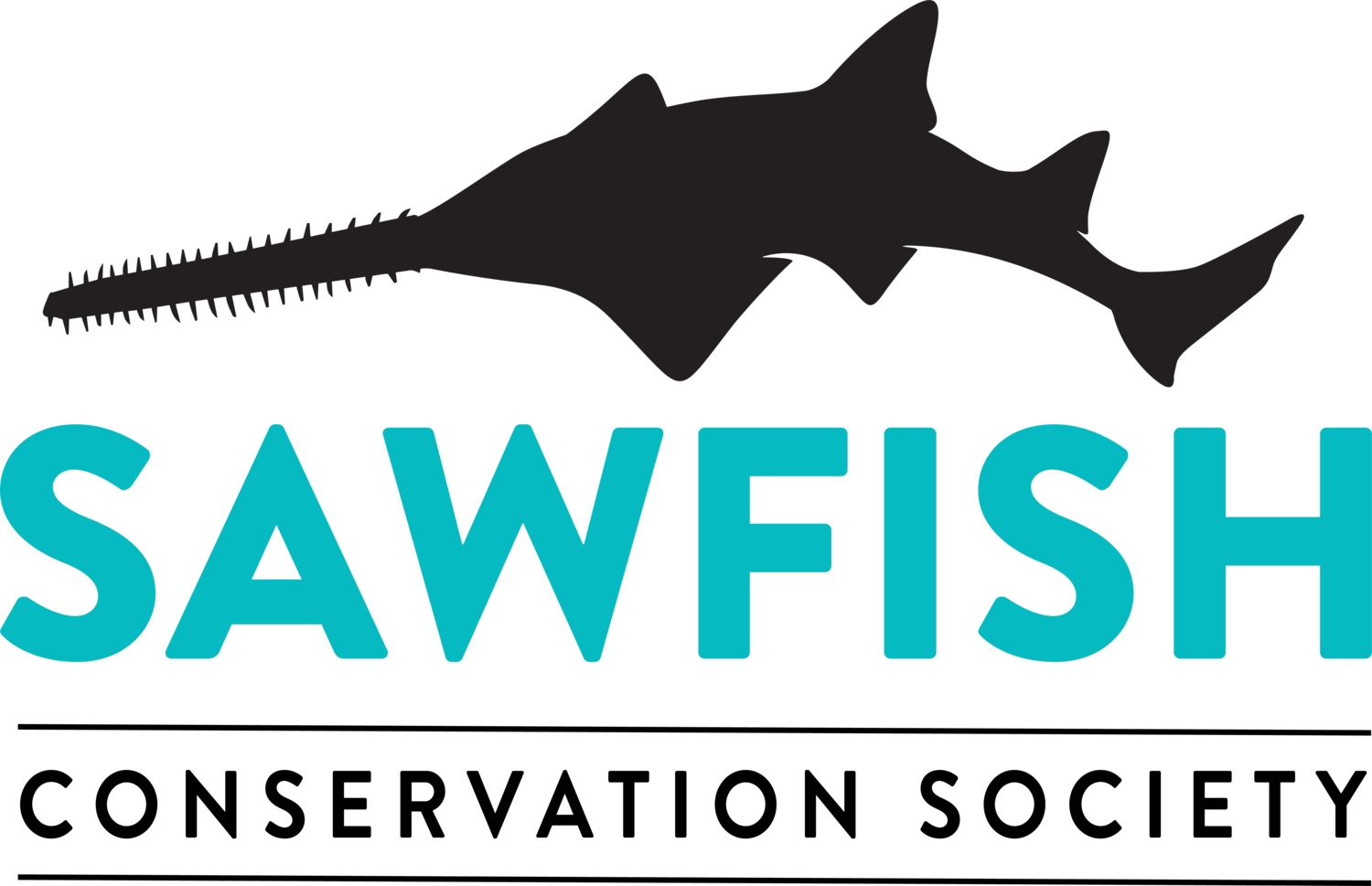NEW: multilingual sawfish identification guides now available and in use in multiple countries!
Five species of sawfish exist today. However, each species
is under threat of extinction. Research and conservation efforts are underway in a number of countries
including the United States, Australia and Mozambique. However, to the untrained eye, sawfish can be difficult to tell apart and this can hinder conservation efforts. In their ‘Global Sawfish
Conservation Strategy’, the IUCN suggested that the development of a species
identification guide was a necessary step to further sawfish conservation. The Sawfish
Conservation Society (SCS) has therefore developed multiple guides for all
species of sawfish. Already, these guides have been distributed within
Australia, Peru, Ecuador, Mozambique, The Gambia and Liberia.
 |
| Fishers in Mozambique being interviewed by local researchers with the assistance of the identification guides. |
The different sawfish identification guides constructed by
the SCS vary in layout and depth of detail. While researchers familiar with the
features of a fish may find the “Detailed” guide more appropriate and more
informative, fishers with little time to spare to identify a sawfish may find the
“Quick and Easy” guide more useful. Still yet, the “Poster” guide may prove to
be visually more appealing when posted at a marina or boat ramp. In addition,
these guides can be transformed into a brochure/tri-fold pamphlet by printing
them on the opposite side of the “Pamphlet Backing” and folding in thirds.
 |
| The four different identification guides and the pamphlet backing now available on the SCS website. |
Each guide lists a number of features on the sawfish body
and saw that are the most useful in identifying each species. Although a single
feature can sometimes be used to identify a species, it is best to use multiple
features to ensure accurate identification. In addition to listing these features,
when combined with the pamphlet backing, each guide presents details of how to
help conserve sawfish, where to report sawfish encounters and provides
information regarding the SCS.
Currently, the identification guides are available in English,
Spanish, French and Portuguese. We also have plans to offer additional
languages including, at a minimum, Brazilian Portuguese and Arabic. Each guide
has also been formatted to fit on Letter and A4 sized paper. All guides,
languages and formats are available here on the SCS website.
 |
| Students learning how to identify sawfishes during a school visit by SCS volunteers. |
While the standard guides are available online in a PDF
version, these guides can be customized for specific purposes. Customizations can include the addition of a company’s logo and contact
details, narrowing of the number of species present on the guide (useful if
only a few species occur within an area where the guides will be distributed)
or translation of the guide into a specific language not yet provided.
Interested parties should contact the SCS at sawfishconservationsociety@gmail.com
to inquire about such changes. In addition, printing of the PDFs available
online can result in some pixilation of images when printed on some printers.
If this should occur, please contact the SCS at the above address and a Word
document will be sent to you to remedy this issue.
Many thanks are owed to the numerous people that have helped
in the making and distribution of the identification guides. Most notably,
these people include Nicole Phillips and Barbara Wueringer who assisted in the
design of the guides, Ruth Leeney, Vanessa Figueroa, Rachel Graham, Ruth Higgins, Jeremy
Kiszka and Jaime Penadés Suay who were vital in the
translation of the guides, and Dana Bethea, John Carlson, David Morgan, Jason Stapley
and Dean Thorburn whose photos are displayed within the guides.
If you have a suggestion on how to improve these guides, find a mistype or would like to assist in translating these guides into another language please contact the SCS at sawfishconservationsociety@gmail.com.
 |
| Sawfish identification pamphlets available at information centers, fishing stores and truck stops throughout Western Australia. |
